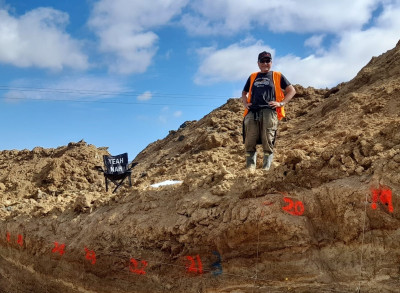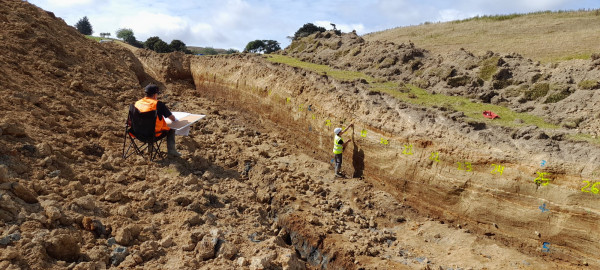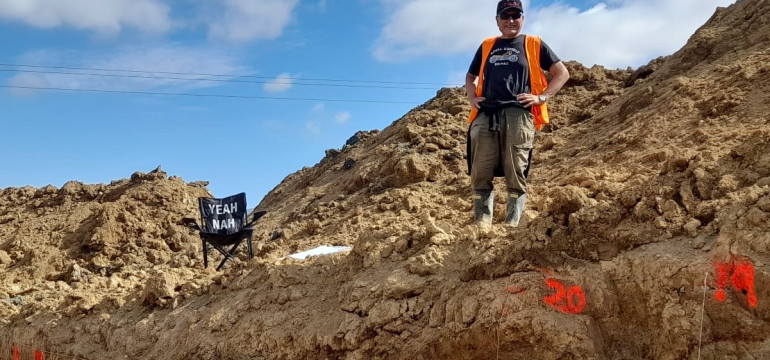Scientists fill knowledge gap for Catlins fault hazards
Scientists are uncovering more information about a fault in the Catlins which is capable of producing large earthquakes, but little information is known about the exact scale of the earthquakes, or how often they happen.

The research, funded by Toka Tū Ake EQC as part of the University Research Programme, aimed to assess the hazard the Settlement Fault poses in this low seismicity region.
It’s estimated that this fault is capable of producing large earthquakes, with a magnitude of around 7, but there’s a lot of questions still left unanswered.
Finding the answers is a challenge as there have been no major earthquakes recorded in this location, so there is no data to build on.
Scientists also can’t measure the full length of the Settlement Fault, which is important to gauge the size of previous and future earthquakes, as the fault stretches under the ocean at its southern end.
Professor Mark Stirling and his team from Otago University surveyed a freshly dug trench - 40 metres long, 6 metres wide and deep - and collected sediment samples which were suspected to have been moved in one or more prehistoric earthquakes.

In the coming months, these samples will be tested to determine their age and other information about how often these earthquakes might occur.
"Determining the age of the sediment that’s moved is important to work out slip rate of a fault - the speed that the fault is moving," said postdoctoral scholar Jack Williams, who has been investigating the fault.
"This will probably be less than 0.1mm per year for the Settlement Fault. This means the probability of a Settlement Fault earthquake in the next 50 years is low. But this probability will still be greater than zero, and the data we collected from this trench will help constrain this number."
Research like this helps to build up a larger picture of fault behaviour in the future.
"This data can also be used for a bigger purpose in seismic hazard models, which give us an idea about the levels of ground shaking that earthquakes will cause in future.
"In a region like the Catlins, people may be aware of the hazard posed by a future Alpine Fault earthquake 200-300 km away on the West Coast. This is correct to an extent, as earthquakes will occur more frequently along the Alpine Fault than on a local fault such as the Settlement Fault. However, the Alpine Fault is a long way from the Catlins, so the strength of shaking from Alpine Fault earthquakes won’t be nearly as high as from a local source like the Settlement Fault. Although it’s not something to lose sleep over, it’s definitely good for people to be aware of their local earthquake hazards too.
"Indeed, the Settlement Fault is quite similar to the faults responsible for the Canterbury earthquake sequence, which probably repeats only every 20,000-30,000 years."
The Settlement Fault work is part of a larger project, investigating faults across Otago and Southland to map the seismic hazards and to better understand the fault system.
Dr Natalie Balfour, Head of Research at Toka Tū Ake EQC, says that projects like this are important for a more prepared Aotearoa.
"Although there are lots of active faults across Aotearoa, a lot of the detailed analysis is on high seismic areas. It’s important to have these data in low seismic areas too, to develop our understanding of natural hazards across the country.
"This project is important for building up a regional perspective of how faults behave and vary over time. It won’t just help scientists – but also local councils and planners."
